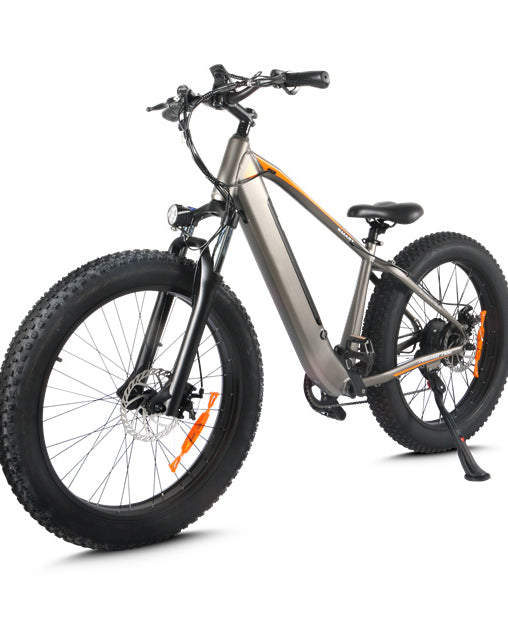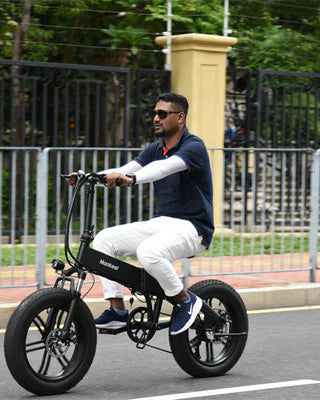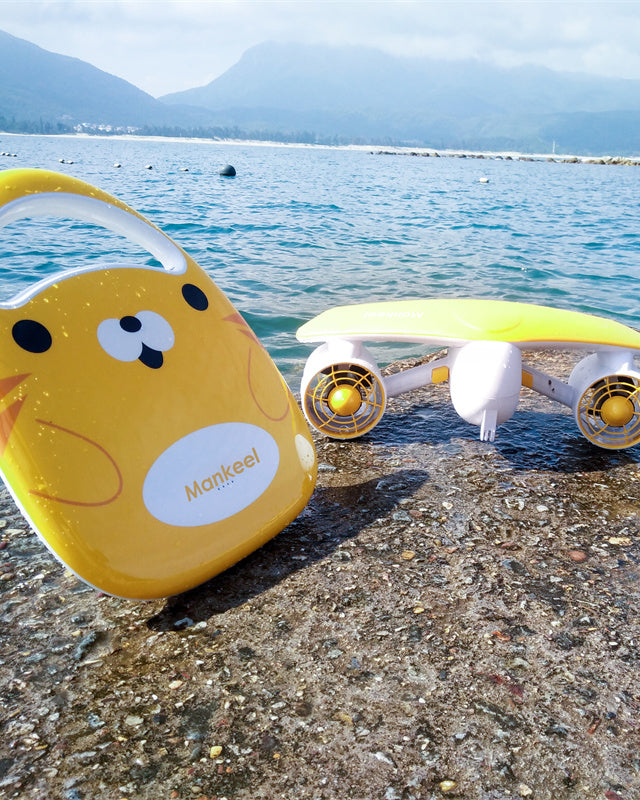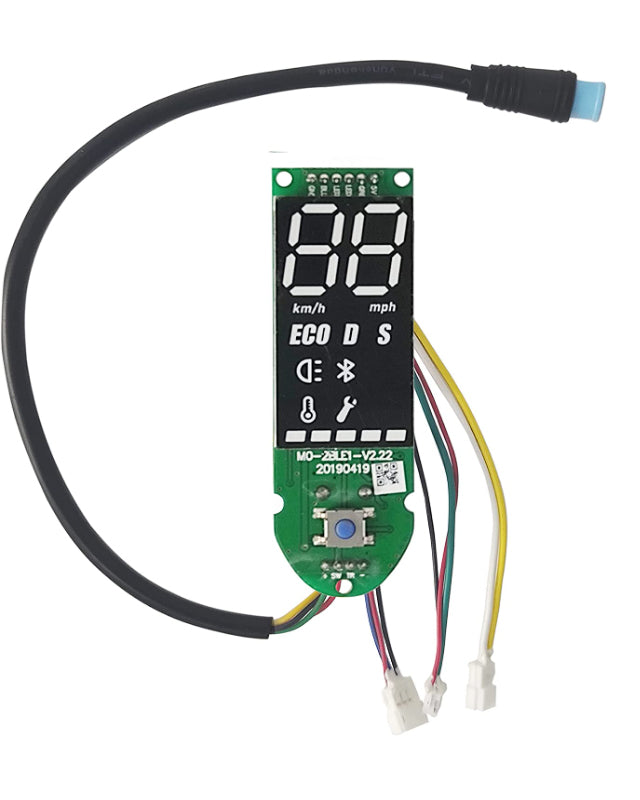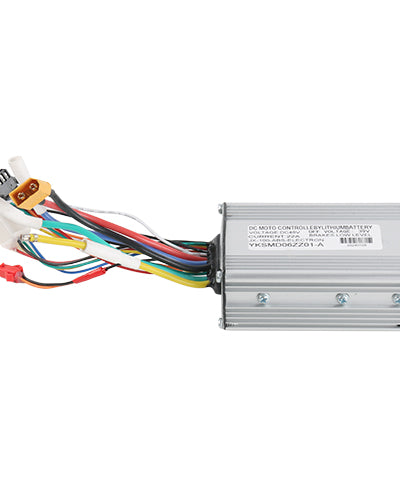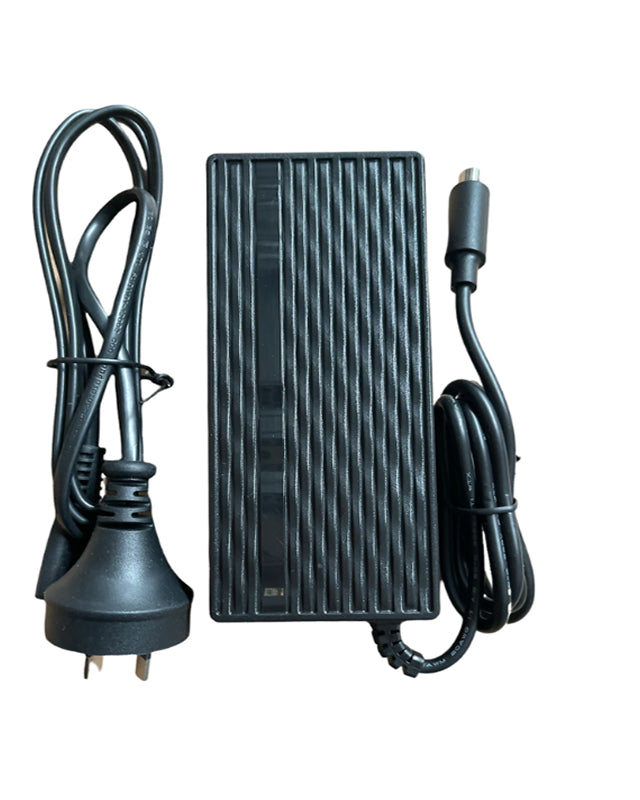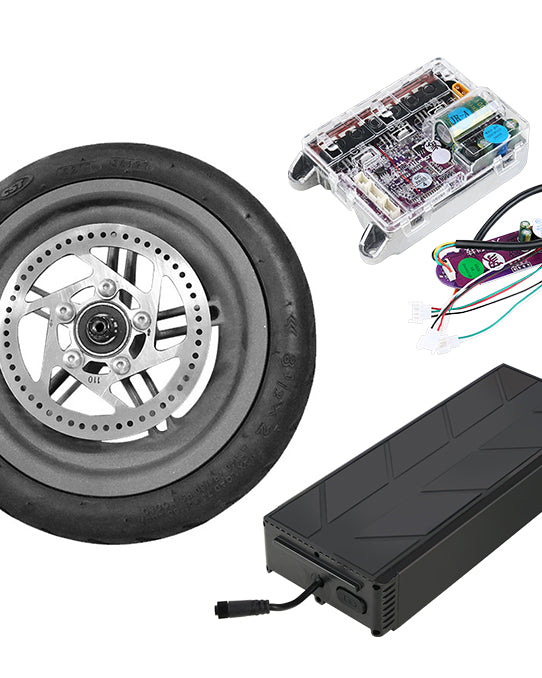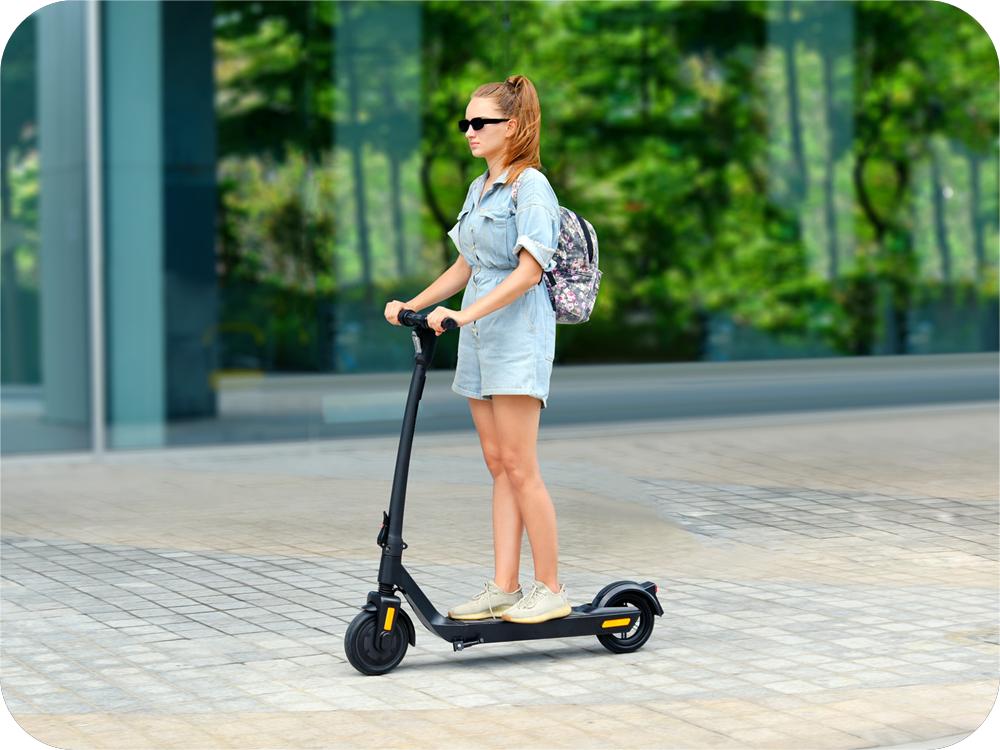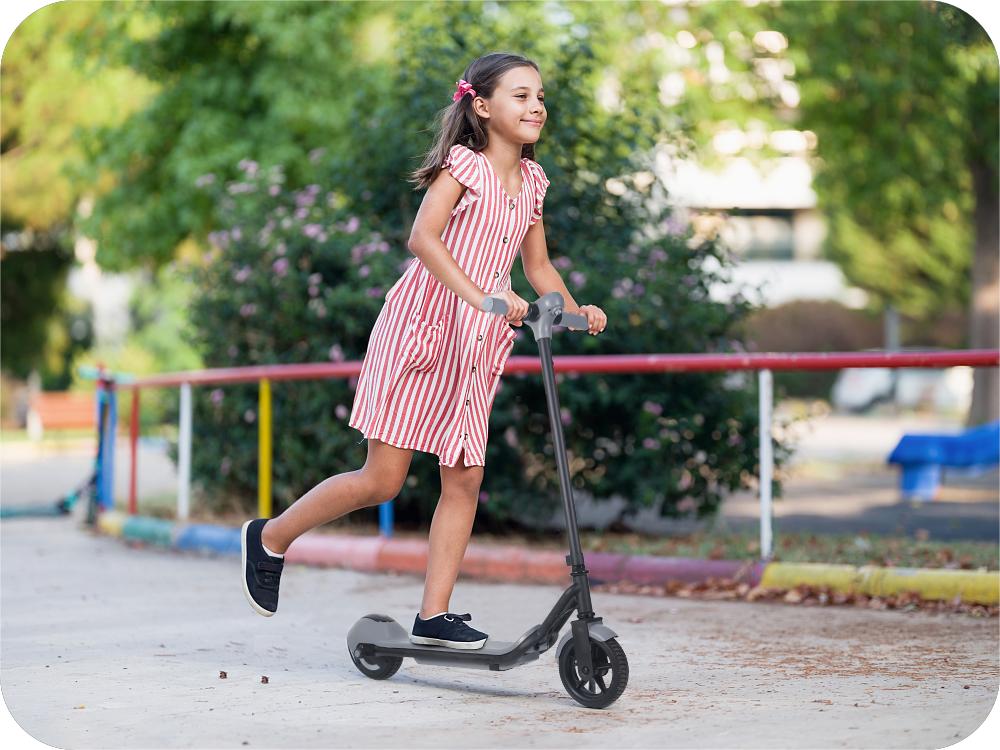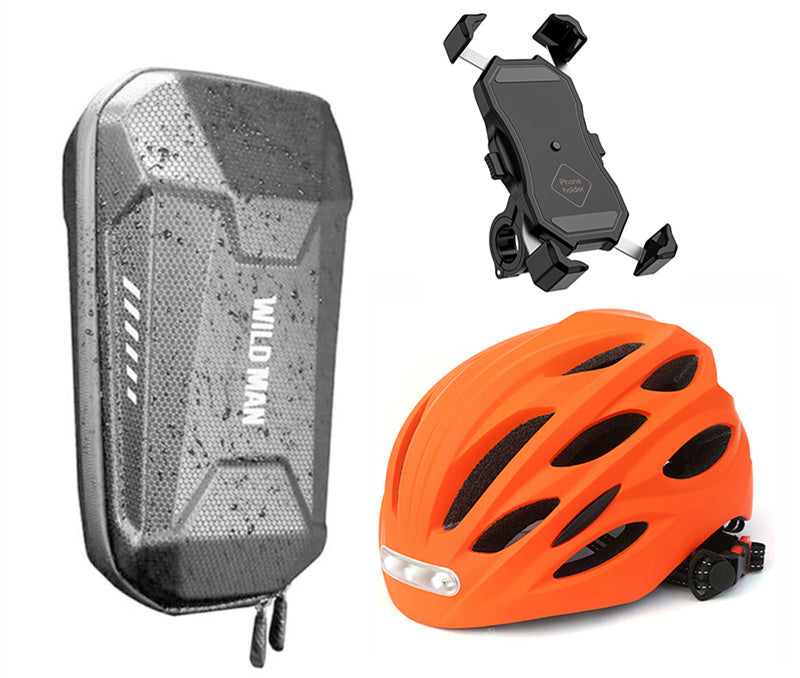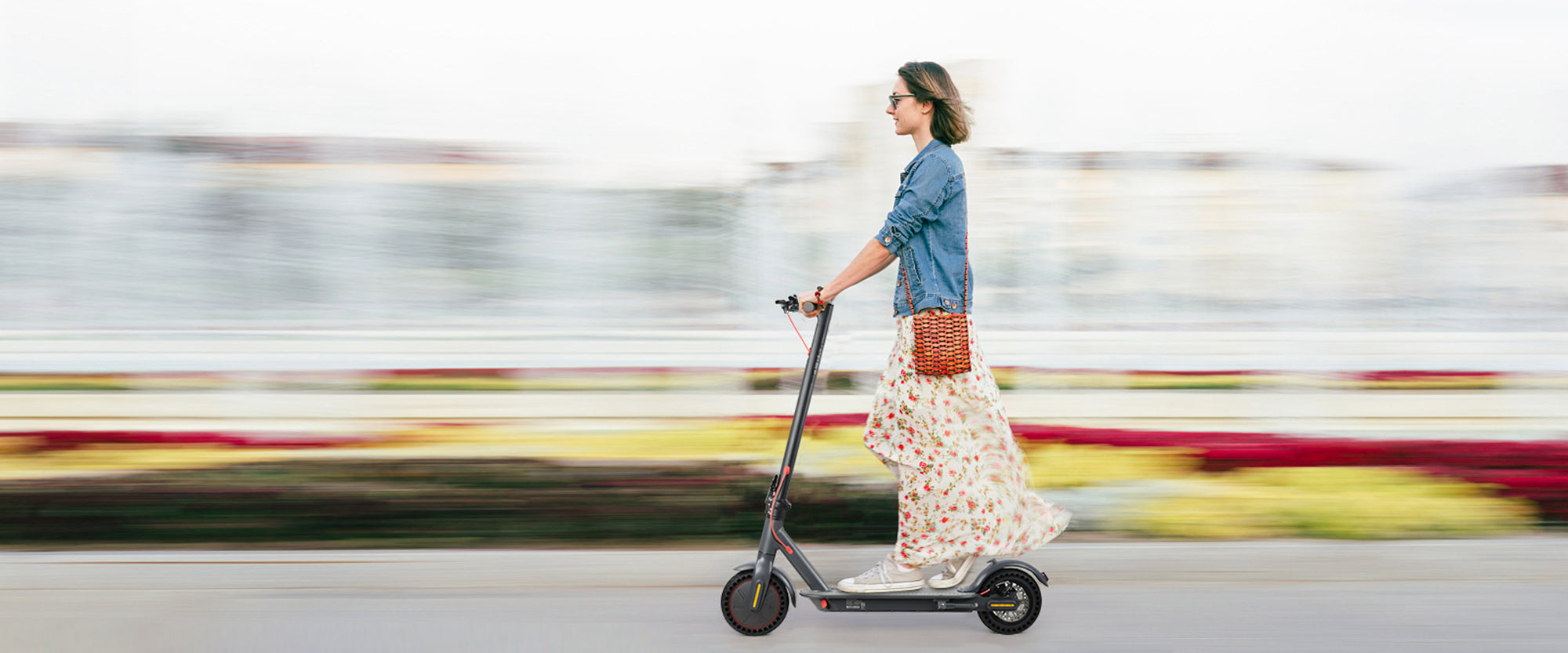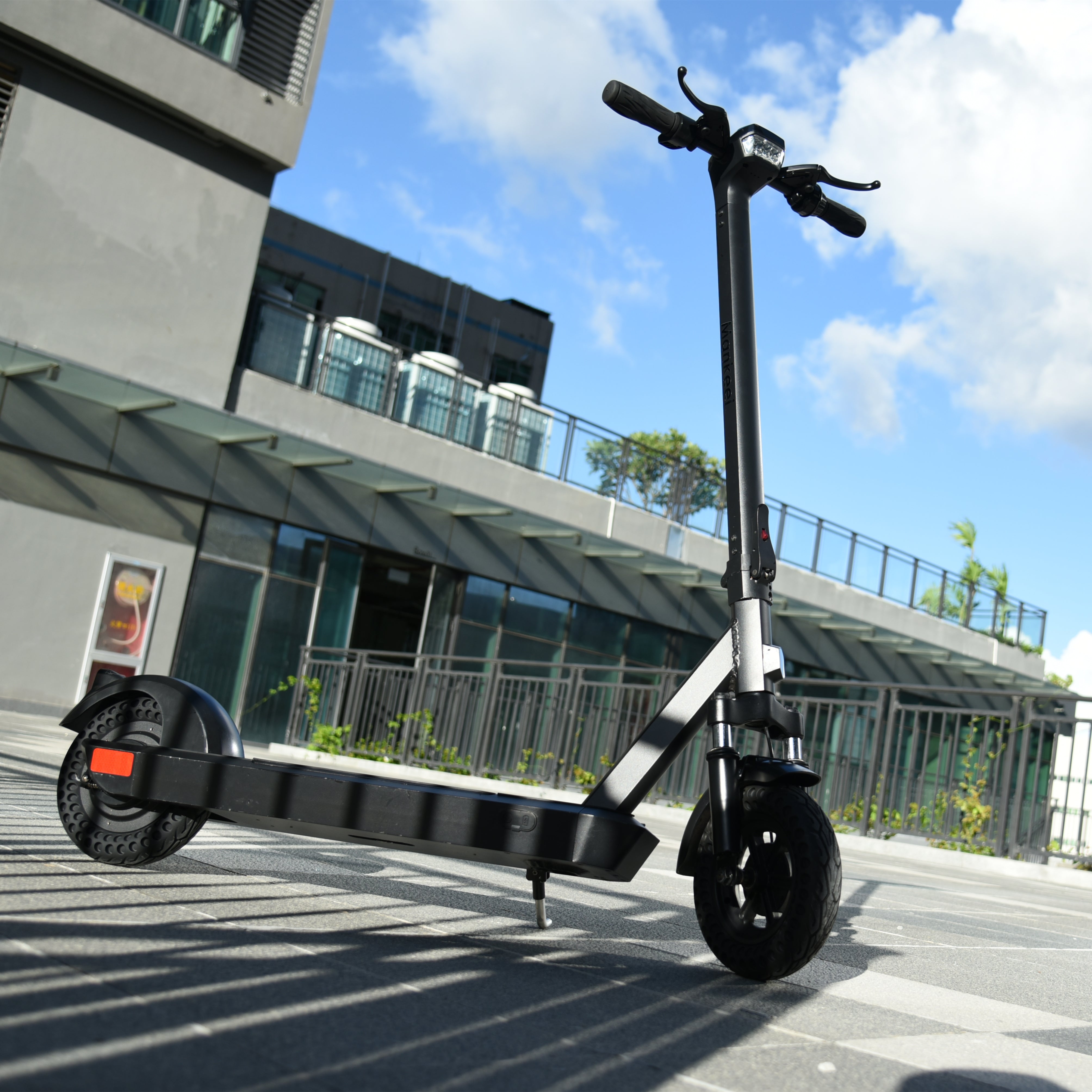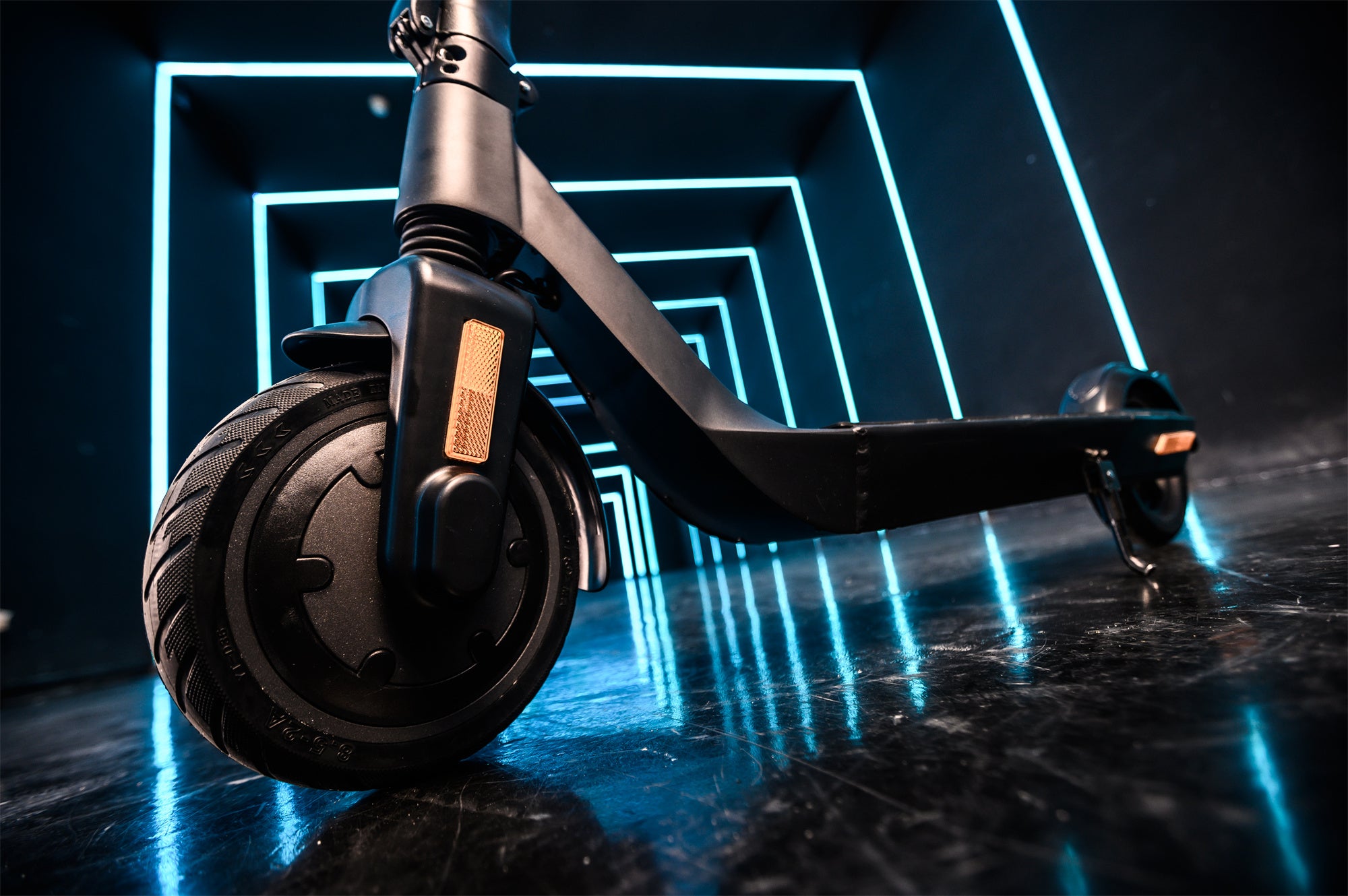Definitive Handbook on Electric Scooters
The ultimate manual on electric scooters is presented here. It serves as a foundation for obtaining comprehensive knowledge on their background, varied parts, means of transportation, regulations, security measures, upkeep, and the concept of scooter sharing.
"Electric Scooters: Not Just Toys After All?"
Electric kick scooters, like the Razor kick scooters of the 1990s, have two wheels, a platform called a deck, and a handlebar for steering. They differ from the non-motorised kick scooters of the 1990s by having an additional battery, electronics, larger (often air-filled) tyres and an electric motor.
Although most scooters are designed to be ridden standing up, some scooters can be converted into seated electric scooters with optional accessories.
Recently, there has been a huge increase in interest in scooters – mainly because they have been brought to cities overnight by scooter-sharing companies like Lime and Bird.
Scooter sharing has raised public awareness of micro-mobility and driven the growth of the private market. The explosion of the private market has led to hundreds of different models of electric scooters being imported from a large number of different brands.
Although most companies produce electric scooters for adults, some companies – notably Razor – target the market for children and young people.
Adult Electric Scooters: A Convenient and affordable Mode of Transportation
Adult electric scooters are the most common type of scooter on the market. They differ from children’s electric scooters because they have a larger weight capacity, usually around 220 lbs (100 kg), more powerful motors, larger battery, larger deck, and a taller shaft.
Some popular brands of adult electric scooters are: Boosted, Glion, GoTrax, Xiaomi, Swagtron, Zero and Fluid FreeRide, Kaabo and MiniMotors.
Some notable models are the Xiaomi Mi M365, Dualtron, Wide Wheel, Zero 10X, Boosted Rev and Wolf Warrior 11.
Typically, electric scooters designed for adults come at a starting price of $300 or more. Conversely, those intended for children can be purchased for less than $200.
Electric Scooters For Kids
Electric scooters for children and young people are usually smaller, lighter and cheaper than their adult counterparts. They are often made of less durable materials such as plastic, have weak motors and may even contain lead-acid batteries with low energy density.
It should be noted that electric scooters for children are usually not much more than toys and should be used as such. They should not be used for riding on public roads or driven by adults.
Some popular brands of electric scooters for children are: Razor and Jetson.
A typical electric scooter for kids weighs about 20 pounds, has a 150-watt motor, a 100-watt-hour battery (either sealed lead-acid or lithium-ion), a 3-mile range, and costs about $200.
Note: Taller or taller teenagers should use an adult electric scooter, as a child’s scooter is likely to be too small and underpowered.
Comfortable Choice: Seated Electric Scooter
Seated electric scooters are primarily for adults and are designed to make longer rides more comfortable. Most electric scooters do not come with a seat, but many have optional seat attachments that are sold as separate accessories.
A hallmark of modern e-scooters is that they fold up – making them both portable and convenient to store. This is the main advantage of foldable electric scooters compared to electric bicycles. When a seat is added to an electric scooter, the foldability is usually no longer there, which in our eyes detracts from many of the advantages of foldable e-scooters.
If you need a scooter with a seat, consider an electric bike instead. Electric bikes are generally easier to ride, faster and more comfortable for longer distances. You can’t fold them up for easier transport – but you can’t fold up a seated electric scooter either.
Deconstructing (All of the Parts) an Electric Scooter
Electric Scooter Parts
Electric scooters have a handful of different parts, but the most important are: Batteries, brakes, controller, deck, handlebars, lights, motor, stem, suspension and tires.
Batteries
Electric scooter batteries consist of many individual cells that are connected to each other.
Batteries are the “petrol tank” of an electric scooter. They store the energy used by the electric motor and other accessories, including lighting.
Most electric scooters have a battery made up of lithium-ion battery cells, but some electric scooters for children and other inexpensive scooters have lead-acid batteries.
Batteries are expressed in watt-hours, abbreviated Wh, which is a measure of their capacity. Battery capacity is one of the most important factors in determining the range of an electric scooter. A typical budget scooter has a capacity of about 250 watt-hours, while monster scooters can have capacities of almost 3,000 watt-hours.
Brakes
A high-quality braking system, such as the disc brake pictured above, is essential to stay safe and in control when riding an electric scooter.
Like those on a car or bicycle, the brakes are what slow the electric scooter down. Electric scooter brakes can be divided into two categories: mechanical and electronic.
Mechanical braking systems are those that rely on a physical mechanism to slow down the scooter and are: Disc, drum and foot brakes.
Electronic braking systems use the motor itself to brake and include purely electronic and regenerative braking systems.
Normally, mechanical braking systems provide much stronger braking than electronic systems. However, electronic systems have the advantage that they do not require regular adjustment or maintenance.
Many scooters have a combination of electronic and mechanical braking systems. For safety reasons, we recommend scooters that have at least two braking systems in case one fails.
Controller
The cruise control sends power to the engine based on throttle input.
The cruise control is an electronic component built deep inside the scooter that controls the flow of electricity from the battery to the motor. They usually look like rectangular metal boxes with lots of wires coming out of them. The metal casing serves as a heat synchronizer. The controller receives input from the accelerator and (electronic) brake controls and converts it into a current that is sent to the engine.
Controllers are classified according to the voltage and current they can regulate. Scooters with more powerful motors have controllers with higher maximum voltage and higher maximum current.
Controllers are one of the most underrated parts of electric scooters because they quietly do their job most of the time. They can be a big source of headaches (or make the scooter unsafe) if something goes wrong. On some poorly designed scooters, the controls have been known to fail or malfunction.
Deck
The deck is the platform you stand on while riding. Many are rubberized to provide better traction.
The electric scooter deck — like that of a skateboard — is the thing you stand on. Some electric kick scooters have the battery pack built into the deck.
Most decks have some type of textured finish that provides better grip between your shoes and the scooter. Some scooters, like the Rev pictured above, have a sloped deck that gives you more space to place your feet.
The typical scooter deck size is 14″ by 5″ inches and gives a few inches of ground clearance.
Handlebars
The handlebar is your main connection to the scooter. All the controls are on it, including the accelerator, brakes, speed/adjustment indicator and power buttons.
Most portable electric scooters have foldable handlebars that greatly reduce their width and bring the scooter down to a very portable and storable size.
Lights
Good scooter lighting is important to see and be seen at night. Unfortunately, many of the scooters we tested have inadequate integrated lighting.
Almost every electric scooter has at least one LED headlight and a brake-activated rear light. In addition, many scooters are equipped with multi-colored LEDs that wrap around the deck or shine from below. We like to call this type of lighting swag lighting.
Swag and deck lighting are good for increasing the visibility and coolness factor of your scooter, but not a substitute for powerful headlights and tail lights.
Unfortunately, many electric scooters have woefully weak lighting. Therefore, we almost always recommend additional lighting for safe riding at night.
Most portable electric scooters have foldable handlebars that greatly reduce their width and bring the scooter down to a very portable and storable size.
Motor
Adult electric scooters have hub motors built into one or both wheels. The powerhouse Wide Wheel pictured above has dual 500-watt motors.
Electric scooters have brushless direct current (BLDC) electric motors that are built into the hub of wheels. All electric kick scooters have at least one motor while more powerful ones will have two.
Electric motors are rated based on their power consumption which is express in units of watts. More powerful motors will have greater wattage.
An average electric scooter, like the Mi M365 will have a 250 watt motor; an intermediate scooter like the Horizon will have a 500 watt motor; extreme performance scooters, like the Wolf Warrior will have dual 1200 watt motors.
Stem
The stem is the foldable metal tube that connects the handlebars to the front wheels. On some electric scooters, the folding mechanism is a source of frustration due to instability.
The stem or neck of the electric scooter is the long tube that connects to the front wheel and extends to the handlebars.
Almost every scooter has a folding mechanism built into the stem for easy carrying and storage. In our e-scooter reviews, we often spend a lot of time focusing on this unsuspecting part. But there is a good reason for this. The folding mechanism can be difficult to operate, or worse, it can be loose or unstable. If you apply force to the handlebars, you will find that the entire stem wobbles back and forth – a condition we call stem wobble. This is one of the biggest disadvantages of foldable electric scooters.
Unfortunately, it’s not just the cheap scooters that suffer from poor stem wobble. The high-end Dualtron scooters are notorious for this problem, despite their otherwise immense quality.
Suspension
Many electric scooters have no suspension, while high performance ones, like the Zero 8X pictured above feature a beefy coil-over-hydraulic suspension.
The suspension of the electric scooter, like that on motor vehicle or bicycle, helps to improve ride quality and dampin bumps in the road.
There are three main types of suspension systems that are typically found on electric scooters: spring, hydraulic or air piston, and rubber suspension. Scooters with the best suspension will have some combination of spring and piston — a combination called coil-over-hydraulic or coil-over-air.
Many scooters forgo suspension in favor of large pneumatic tires that provide damping effects. Large pneumatic tires can offer to be a better form of suspension than cheap spring suspensions.
Tires
Tires give you traction to accelerate or brake in an emergency. Airless tires, like the ones pictured above, do not perform as well as pneumatic tires.
Tires are your connection to the road and affect the ride quality, traction, range and braking performance of your electric scooter.
There are basically two types of tires: pneumatic (air-filled) and airless. There are different types of airless tires: Honeycomb tires, polymer-filled tires and solid tires.
We always recommend pneumatic tires because they offer a better ride quality (with or without suspension) and their supple rubber works much better in adverse road conditions.
Looking for an Electric Scooter for You
Buying an electric scooter can be a daunting challenge – there are an overwhelming number of choices, a quality electric scooter is easily $500 and can cost over $2,000.
Throwing a spanner into matters are numerous dubious “review” websites and reviewers who have never touched a scooter in their lives.
We have personally tested and developed unbiased written and video reviews for electric scooters in all price ranges so you can find the one that best suits your needs.
To buy a scooter without doing any research, choose one from our curated list of the best electric scooters. We also have articles on the best-rated scooters in the $300, $600, $900, $1200, $1600, and $2500 price ranges.
Electric Scooters for Commuting: Factors to Keep in Mind
Commuting with electric scooters is part of the new trend of micromobility that solves the last mile problem. The last mile problem refers to the last leg of a journey – be it walking from the bus stop to the office or leaving the motorway by car to head for a specific destination.
Paradoxically, this part of a journey is usually the slowest and most difficult, even though it is the shortest. This is because public transport and roads are optimised for connecting large population centres that are far apart. Think about it: multi-lane motorways connect large cities that are dozens or hundreds of kilometres apart. At average highway speeds, you can travel 60 miles in an hour, or about one mile per minute.
However, once you get off the motorway, the last mile can take 15 minutes or more!
This is where electric scooters, bike sharing, electric skateboards etc. come in. – all forms of micro-mobility – come into play. They make the last mile of your journey faster, easier and more environmentally friendly.
If you only have to commute a few kilometres to work or walk from a bus stop or local transport centre, an electric scooter is the perfect option for you.
Comparing Electric Scooters and Bikes
Compared to bicycles, electric scooters are more mobile, less prone to theft and require less physical effort than bicycles.
They allow you to get to your destination without physical exertion at a speed of about 15 mph. You can arrive at your destination faster, fold up the scooter and take it with you. Because they require less physical effort than a bicycle, you don’t sweat as much as you do when riding a bicycle (and can get to your destination faster with many scooters).
Electric scooters also have some disadvantages that might make bicycles a better option in some cases. These include the ability to carry them around the house, stability and cost.
If you are physically unable or not allowed to take your electric scooter indoors, a bicycle may be a better choice. Leaving an electric scooter on the street for an extended period of time is not ideal – they are more susceptible to theft and vandalism and are more difficult to lock due to a lack of locking points.
Bicycles are more stable due to their geometry and larger tires and are better suited to rough roads. Adult scooters have relatively small tires that do not roll easily over bumps. They also have a more upright steering angle, which makes them inherently less stable and more prone to wobbles that have brought down many a scooter rider.
Finally, adult electric scooters are more expensive than quality entry-level bikes. An entry-level bike costs about $300 and is much more durable. A fall on a bike is unlikely to injure most, while many scooters, especially budget ones, can be rendered completely inoperable after an accident.
to work or walk from a bus stop or local transport centre, an electric scooter is the perfect option for you.
Electric Scooter Regulations and Where You Can Drive
You should always check your local and state laws before riding an adult electric scooter on roads or in public areas. The information provided here about the laws should not be taken as legal advice.
Electric scooter laws vary widely by state and city. In some jurisdictions, motorised electric scooters are banned completely.
Where they are legal, most jurisdictions are beginning to regulate them in the same way as bicycles. Generally, they must be ridden on the road or on cycle paths and cannot be ridden on the pavement or on pedestrian walkways.
Like a bicycle, you must obey all the traffic rules that apply to cars. This includes stopping at stop signs and red lights.
Why wearing equipment is important when riding electric scooters
Safety is not to be trifled with – you could be killed or permanently maimed while riding an electric scooter.
Safety equipment, including a helmet, is an absolute necessity when riding an electric scooter at any speed. Depending on the speed and type of riding conditions you experience, you may need more or less equipment.
Safety equipment that can prevent accidents and alleviate injuries include:
Helmet
Gloves
Knee pads
Elbow pads
Protective jacket and trousers
Lights
Horn
Where to get your electric scooter repaired
Electric scooters do not require regular maintenance except for checking the air pressure if they are equipped with pneumatic tires.
If you are looking for information on repair, maintenance, or upgrading, see our detailed guides for various electric scooters (new ones are added all the time).
Find out where you can have an electric scooter repaired.

